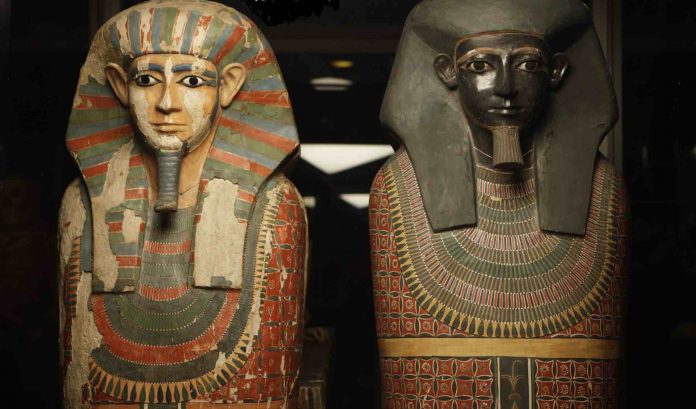Science has increased the distance between two “brothers” 4,000 years after their death.
Ever since they were found buried together, the mummies of Khnum-nakht and Nakht-ankh have always been known as the “Two Brothers.” Over 3,800 years after their burial, using “next generation” ancient DNA sequencing, we can now actually test whether this nickname is well-founded.
It turns out, the “Two Brothers” aren’t exactly brothers, but half-brothers.
Scientists at the University of Manchester in the UK have been studying this pair for several years. They started by extracting DNA from their teeth in 2015. Now, using a revolutionary new technique, analysis has been carried out on their mitochondrial DNA, which comes from the mother, and their Y chromosome DNA, which passes relatively unchanged from father to son.
The results showed that both Nakht-Ankh and Khnum-Nakht belonged to mitochondrial haplotype M1a1, meaning they had the same mother. However, they did not share the exact same Y chromosome sequences, suggesting they had different fathers.
The study, recently published in Journal of Archaeological Science, is the first time scientists have ever pulled off this kind of analysis on Egyptian mummies.
“It was a long and exhausting journey to the results but we are finally here,” said Dr Konstantina Drosou, of the School of Earth and Environmental Sciences at the University of Manchester who conducted the DNA sequencing, in a statement.
“I am very grateful we were able to add a small but very important piece to the big history puzzle and I am sure the brothers would be very proud of us. These moments are what make us believe in ancient DNA.”
The “brothers” were first discovered by workmen in the Egyptian village of Deir Rifeh, some 400 kilometers (250 miles) south of Cairo, in a tomb dating back to 1800 BCE. Hieroglyphics on the two coffins notes that both men were the sons of an unnamed local governor and a mother named Khnum-aa. When the pair were first studied by Egyptologists at the start of the 20th century, they concluded that the skeletons were significantly different, suggesting an absence of family relation or that one of the duo was adopted.
Now we know that they were most likely half-brothers, researchers are unsure whether one of the brothers had a surrogate father, if their mother had an affair, or if she remarried later in life. Then again, given the ancient Egyptians’ reputation for scandalous love affairs and family drama, all options are on the table.















